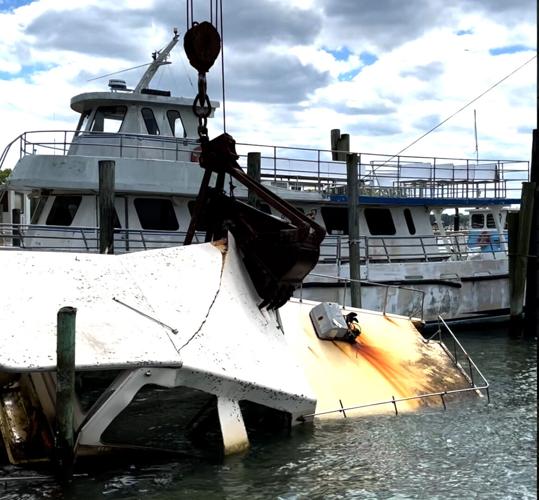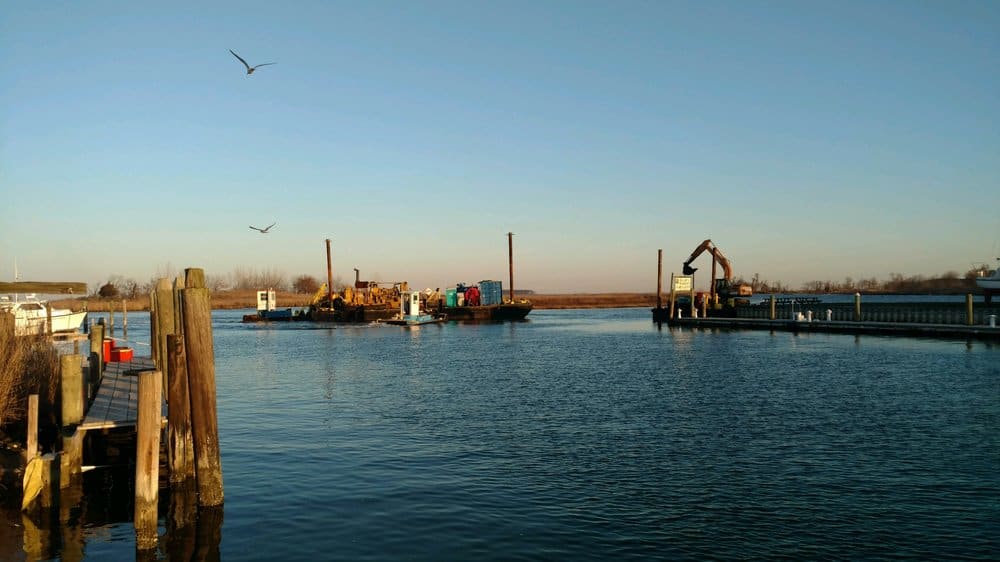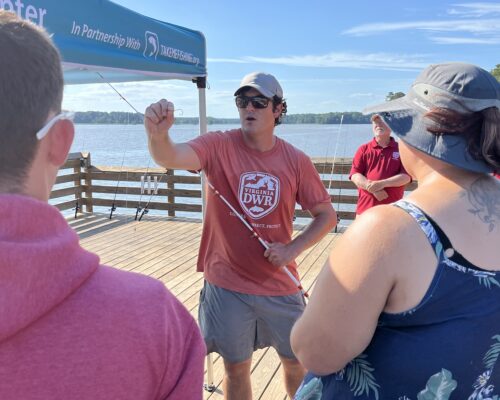By Whitney Pipkin, Bay Journal News Service
Whether lurking as hazards beneath the water’s surface or becoming eyesores as they drift ashore, abandoned boats are a growing problem in Chesapeake Bay waters—especially in Virginia.
The U.S. Coast Guard has documented 170 abandoned and derelict vessels in Virginia waters since 2013, and state officials are building a list of even more that need to be removed.
One of the biggest concerns involves boats built during the affordable fiberglass boat boom that began in the 1960s, which are reaching the end of their lifespans. The number being abandoned appears to be on the rise.
“When luxury is built in,” reads one 1980 ad for a 37-foot cruiser with a fiberglass hull, “it doesn’t wear out.” Made with reinforced plastic-and-glass materials, these boats don’t blend into a marshy shoreline as they decompose, like their wooden forebears. Instead, they persist in the environment, shedding microplastic particles and leaching toxic materials over time.
The boats often end up left in a marina or set adrift because the owner feels like there aren’t other options for disposal. Getting rid of a defunct boat can easily cost more than the boat is worth.
Unlike old cars, whose mostly metal frames can be sold or donated for scrap materials, the fiberglass components of a boat “are practically worthless and tend to cost more to remove, prepare for disposal and dispose of than their parts are worth,” states a recent report from the Virginia Coastal Policy Center at William & Mary Law School.
Abandoned boats pose navigation problems for other boaters and are hazardous to the environment. Some slowly disintegrate in the marina where an owner has left them. Others drift into marshes or are purposefully sunk near a shore. Fuel, oil, paint, sewage and chemicals leaching from batteries and cleaners onboard threaten the environment as the vessel drifts or sinks.
Not to mention, “the longer it’s out there, the more expensive it is to remove,” said Karen Forget, executive director of Lynnhaven River NOW, who has for years received calls from residents concerned about sinking or stranded boats near Virginia Beach. “They want us to come up with some kind of solution for what to do with it.”
The Lynnhaven group, along with Virginia’s Coastal Zone Management Program and the Clean Virginia Waterways project at Longwood University, has applied for a grant from the National Oceanic and Atmospheric Association’s Marine Debris Program to fund more boat removals. The federal program funneled nearly $2 million into 10 marine debris removal programs in states in 2021, helping them tackle a backlog of derelict vessels decomposing in their waters.
The Coastal Zone Management Program, operated under Virginia’s Department of Environmental Quality, has largely completed a report on the status of the state’s abandoned boat problem. First drafted in the fall, the document includes policy suggestions for giving boat owners better options for disposal, funding removals and addressing the underlying issues contributing to an uptick in abandoned vessels.
As of late May, the report was waiting for approval by the Gov. Glenn Youngkin’s administration. Meanwhile, the agency has been working on an inventory of abandoned boats to help prioritize removals once funding becomes available.
Mike Provost had recently retired from the U.S. Navy when he got curious about an abandoned 36-foot cabin cruiser left tied to a tree in Long Bay Pointe off the Lynnhaven River.
“I made a couple calls and quickly determined no one was going to do anything about it,” he said.
Virginia’s current approach to the problem of abandoned vessels is piecemeal and painstakingly slow. The authority to remove vessels is divided among several agencies, depending on where the boat is located and other factors. That leaves many structures in limbo as to who’s responsible for removal.
So Provost began fundraising to remove the boats himself, ultimately starting a nonprofit, the Vessel Disposal and Reuse Foundation. He raised the $11,000 needed to remove that first boat, which eventually ran aground at First Landing State Park, with a GoFundMe page.
Since December, the organization has removed nine boats from the Lynnhaven River area. Provost learned a lot from that first removal and has since worked with a marine salvage contractor to do the heavy lifting.
If the boat were to leak oil while being removed, the person or group removing it bears the liability in many cases. If a person disposed of a boat illegally, they may have also removed any identification that would help find and transfer legal ownership of the vessel.
Through tracking down boat owners, Provost has developed a better understanding of the types of situations that lead them to abandon their vessels. Most, he said, are elderly, facing financial trouble, physically or mentally handicapped or addicted to illegal substances.
Provost estimates that his organization has removed 100,000 pounds of marine debris from waterways so far.
“That’s like removing tons of beach trash, which is crazy to me,” he said.
He’s already begun raising an additional $75,000 to remove the next batch of vessels with plans to tackle a “boat graveyard” in the North Landing River where an estimated 13 boats have been abandoned next to a natural area preserve.
Provost knows he can’t keep up with the ongoing influx of abandoned boats if the underlying issues aren’t addressed, and he hopes the state efforts will start to stem the tide.
You can read this article in its entirety at bayjournal.com.




